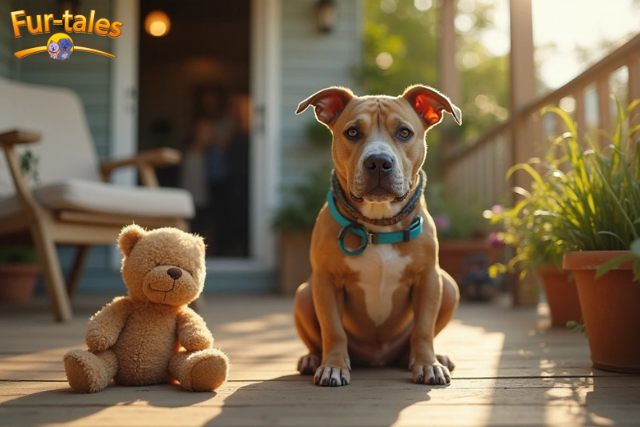
The Hidden Joy of Rescue Pet Adoption: From Scared Shelter Dog to Family Hero
There’s something magical about adopting a rescue pet. It’s not just about giving a home to an animal in need—it’s about discovering a kind of joy you didn’t know was missing. The journey from a nervous, shelter-shy animal to a confident, loving companion can be one of the most rewarding experiences for any pet parent.
Whether you’re considering pet adoption for the first time or simply want to know what it’s like, this article will walk you through the heartfelt transformation of a rescue pet—and why adopting might just be the best decision you’ll ever make.
Why Rescue Pets Deserve a Chance
In shelters across the United States, millions of animals are waiting for a second chance. Many were surrendered due to no fault of their own—often because of changes in their previous owner’s living situation, finances, or health.
These animals aren’t broken—they’re just waiting for someone to believe in them. When you adopt, you’re not only saving a life, but you’re also making space for the next animal in need.
And here’s the twist: rescued pets often end up rescuing us right back.
From Scared Shelter Dog to Beloved Family Member
The early days of adoption can be full of uncertainty—for both you and your new pet. You may be welcoming a dog or cat who’s shy, scared, or even shut down. But give them time, love, and patience, and what you’ll get in return is pure gold.
Here’s what that journey typically looks like:
1. The First 3 Days: Decompression
This is when your new pet is trying to figure out what just happened. Everything is unfamiliar—the smells, the people, even the sound of the refrigerator. It’s normal for your pet to be reserved, anxious, or sleep a lot.
New pet owner tips:
- Create a quiet, safe space with a bed, food, and water.
- Limit guests and stimulation for the first few days.
- Stick to a simple routine for meals and potty breaks.
2. The First 3 Weeks: Adjustment
Your pet is starting to explore and test boundaries. You might see more of their personality shine through—along with some behavioral hiccups. This is the time to begin gentle training, bonding, and establishing rules.
First vet visit guide:
Within the first week or two, schedule a full wellness check. Bring any adoption records and ask your vet to create a pet health checklist tailored to your new companion.
3. The First 3 Months: Trust and Transformation
By now, your pet is getting comfortable. You’ll likely see a big shift in confidence and affection. They’re learning that they’re home for good—and that’s when the real magic happens.
Many rescue pets blossom into loyal, funny, and endlessly loving family members. Some even go on to become therapy animals, running buddies, or the kind of soulmates that change lives.
Why Rescue Pets Are So Special
There’s something uniquely grateful about a rescue animal. Whether it’s the way they follow you from room to room, or how they curl up in your lap with a sigh that says “thank you,” it’s a bond like no other.
Here’s what makes rescue pets stand out:
???? Unmatched Loyalty
Rescue pets often form deep connections with their humans, knowing full well that they’ve been given a second chance.
???? Built-In Resilience
Many shelter animals have been through tough situations. When they find stability, their strength and adaptability shine through.
???? Emotional Awareness
Rescues can be incredibly empathetic. Ask any pet parent of a shelter dog, and they’ll likely tell you: “He just knows when I’m feeling down.”
Helping Your Rescue Pet Thrive
Patience is key. Every rescue animal comes with a different story, and healing looks different for each one. Here’s how you can support their transition:
1. Stick to a Routine
Consistency helps your pet feel secure. Try feeding, walking, and playing at the same times each day.
2. Provide Mental Stimulation
Puzzles, sniff walks, and interactive toys keep boredom at bay and promote confidence—especially for dogs who are adjusting to a new life.
3. Work With a Trainer
If your pet has behavioral quirks (fear of loud noises, resource guarding, etc.), a certified positive-reinforcement trainer can work wonders.
4. Celebrate Small Wins
Did your scared dog finally take a treat from your hand? That’s worth celebrating! Progress may be slow, but each step matters.
Real-Life Heroes: Rescue Pets Who Saved Their Families
There are countless stories of rescue pets becoming unexpected heroes:
- Sadie, a German Shepherd rescued from a kill shelter, woke her owner in the middle of the night when a fire started in the garage.
- Max, a formerly stray cat, alerted his family to a carbon monoxide leak by pawing at their faces and yowling loudly.
- Ruby, once labeled “unadoptable,” now serves as a certified therapy dog, bringing comfort to children with autism.
These stories aren’t rare. They speak to the depth and strength found in pets who’ve been given a second chance.
Rescue Myths: Busted
Myth 1: Shelter animals are “damaged.”
Truth: Most are loving, healthy pets who were simply dealt a tough hand.
Myth 2: You don’t know what you’re getting.
Truth: Many shelters do personality assessments and will match you with a pet that fits your lifestyle.
Myth 3: Only mixed breeds are in shelters.
Truth: Around 25% of shelter dogs are purebred. If you’re looking for a specific breed, try breed-specific rescues.
How to Prepare for Rescue Pet Adoption
Thinking about adopting? Here’s your quick-start checklist:
✅ Research local shelters or rescue organizations
✅ Visit and interact with animals to find a good fit
✅ Prepare your home with essentials: bed, leash, toys, food
✅ Schedule a vet appointment for a full wellness check
✅ Be patient—bonding takes time
???? Pro tip: Some rescues offer “foster-to-adopt” programs, so you can see if the match is right before making it permanent.
FAQs: Rescue Pet Edition
Q: How long does it take a rescue pet to adjust?
A: Adjustment varies, but the 3-3-3 rule (3 days to decompress, 3 weeks to adjust, 3 months to thrive) is a good guideline. Some pets settle in faster, others need more time.
Q: Should I adopt if I’ve never owned a pet before?
A: Absolutely! Many shelters can help you find beginner-friendly pets and provide new pet owner tips to get you started.
Q: What should I bring to the first vet visit?
A: Bring all paperwork from the shelter, a list of any observed behaviors or symptoms, and questions about diet, vaccinations, and a pet health checklist.
Q: Can rescue pets be trained?
A: Yes! With consistency and positive reinforcement, rescue pets can learn everything from basic commands to advanced tricks.
Q: Are rescue pets good with kids or other animals?
A: Many are, but it depends on the individual pet. Always ask the shelter about temperament and do supervised introductions.
Image Designed Using AI
